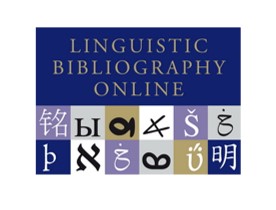The Verbivocovisual Three-dimensionality of the Bakhtinian Language
DOI:
https://doi.org/10.11606/issn.2236-4242.v33i3p105-134Keywords:
Bakhtin Circle, Verbivocovisuality, Dialogue, Sociohistoricity, Living WordAbstract
In this paper, the intention is to reflect about the conception of language formulated by Bakhtin, Medviédev and Volóchinov, in their respectives works Problems of Dostoevsky’s Art (2010 [1929]), The Formal Method in Literary Scholarship (2012 [1928]) and Marxism and the Philosophy of Language (2017 [1929]). The method, called by Bakhtin (mimeo) of “sociological”, considered dialogue among works and authors, in comparison with another texts, not only of the Circle, but of this episteme’s specialists as well and illustrated the reflexion with some aesthetic utterances. The hypothesis is that, to elaborate and to build the propose of study about and the conception of language, those russian authors realize their conceptual delimitation on the whole three-dimensional, here denominated as verbivocovisual (PAULA, 2017), in order to conceive the individual constituted by and in language in its maximum expressive potentiality. Thinking in a bakhtinian studies’ development, turned to the contemporaneity, reveals this search’s relevance. The contribution of the study consists in the reflexion about the bakhtinian studies’ pertinence as theorical foundation in multimodals utterances analyses, beyond verbal materiality, extensively analised by russian authors. The results demonstrate that extemporaneous readings well substantiated can rekindle other lights to the theory and, with it, collaborate with the field of Bakhtinian studies.
Downloads
References
AMARAL, T. do. Operários. Óleo sobre tela. 150 x 205 cm. São Paulo: Palácio Boa Vista, 1933.
ARISTÓTELES; HORÁCIO; LONGÍNQUO. A Poética Clássica. Trad. Bruna Jaime. 12ª ed.
São Paulo: Cultrix, 2005, p. 53-68.
BAKHTIN, M. Questões de literatura e estética. Trad. Aurora Fornoni Bernardini et alii. São
Paulo: UNESP e HUCITEC, 1988.
BAKHTIN, M. A cultura popular na Idade Média e no Renascimento: o contexto de François Rabelais. Trad. Yara Frateschi Vieira. São Paulo: Hucitec, 2008.
BAKHTIN, M. Para uma filosofia do ato responsável. Trad. Valdemir Miotello e Carlos Aberto
Faraco. São Carlos: Pedro & João, 2010a.
BAKHTIN, M. Problemi dell’opera di Dostoevskij. Trad. Margherita de Michiel. Bari: Edizioni
dal Sud, 2010b.
BAKHTIN, M. Estética da Criação Verbal. Trad. Paulo Bezerra. 6ª ed. São Paulo: Martins Fontes, 2011.
BAKHTIN, M. Questões de Estilística no Ensino de Língua. Trad. Sheila Grillo e Ekaterina Vólkova Américo. São Paulo: Editora 34, 2013.
BAKHTIN, M. Problemas da Poética de Dostoiésvki. Trad. Paulo Bezerra. 5ª ed. Rio de Janeiro:
Forense Universitária, 2015a.
BAKHTIN, M. Teoria do Romance I – A Estilística. Trad. Paulo Bezerra. São Paulo: Editora 34,
b.
BAKHTIN, M. Os gêneros do discurso. Trad. Paulo Bezerra São Paulo: Editora 34, 2016.
BAKHTIN, M & DUVAKIN, V. Mikhail Bakhtin em diálogo – Conversas de 1973 com Viktor
Duvakin. Trad. Daniela Miotello Mondardo. São Carlos: Pedro & João, 2008.
BAKHTIN, M. (VOLOSHINOV). Discurso na Vida, Discurso na Arte (Sobre a Poética Sociológica). Trad. Carlos Alberto Faraco e Cristóvão Tezza, a partir da tradução inglesa para fins
acadêmicos, s/d (mimeo)
BAUMAN, Z. Tempos líquidos. Trad. Carlos Alberto Medeiros. Rio de Janeiro: Jorge Zahar,
BRANDIST, C. The Bakhtin Circle: Philosophy, Culture and Politics. London: Pluto Press, 2002.
CAMPOS, A. de; PIGNATARI, D. CAMPOS, H. de. Teoria da Poesia Concreta. São Paulo:
Livraria Duas Cidades, 1975.
CARAVAGGIO. Medusa. Óleo sobre Tela. 60 x 55 cm. Florença: Galleria degli Uffizi, 1597.
Disponível em: http://serturista.com.br/wp-content/uploads/2017/08/IMG_3310-300x300.
jpg Acesso em: 11 de jun. 2020.
CASSOTTI, R. S. Ressonâncias musicais no Círculo de Bakhtin – Ivan I. Sollertinsky, intérprete de Mozart. In: PAULA, L. de; STAFUZZA, G. Círculo de Bakhtin: teoria inclassificável.
Campinas: Mercado de Letras, 2010. (Série Bakhtin: inclassificável, v. 2).
COSOR, S. The Scream. Curta-metragem independente. Vimeo, 2011.
DA VINCI, L. Monalisa. Óleo sobre madeira de álamo. 77 x 53 cm. Paris: Museu do Louvre,
DOBRENKO, E. A cultura soviética entre a revolução e o stalinismo. Estudos Avançados, v. 31,
n. 91, p. 25-39, 1 dez. 2017. Disponível em: http://www.revistas.usp.br/eav/article/view/141902
Acesso em: 12 de out. 2020.
EIKHENBAUM, B. (Edit). The Poetics of Cinema. Series Russian Poetics in Translation by
Richard Taylor et alii, v. 9. England: Department of Language & Linguistics, University of
Essex, 1982.
EMERSON, C. Os 100 primeiros anos de Mikhail Bakhtin. Trad. Pedro Jorgensen Jr. Rio de Janeiro: DIFEL, 2003.
ESQUECERAM DE MIM. Direção de Chris Columbus. Estados Unidos: 20th Century Fox,
103 min, son, cor.
FARACO, C. A. Linguagem e diálogo: as ideias linguísticas do Círculo de Bakhtin. Curitiba:
Criar, 2009.
FOLMAN, A.; POLONSKY, D. O diário de Anne Frank. Rio de Janeiro: Record, 2017.
FRANK, A. O diário de Anne Frank. Rio de Janeiro: Record, 1995.
GRILLO, S. Marxismo e filosofia da linguagem: uma resposta à ciência da linguagem do século
XIX e do início século XX. In: VOLÓCHINOV, V. Marxismo e filosofia da linguagem. Trad.
Sheila Grillo e Ekaterina Vólkova Américo. São Paulo: Editora 34, 2017.
IVANOVA, I. O diálogo na linguística soviética dos anos 1920-1930. Bakhtiniana. Revista de
Estudos do Discurso, [S.l.], n. 6, p. 239-267, nov. 2011. ISSN 2176-4573. Disponível em: < https://revistas.pucsp.br/bakhtiniana/article/view/6089 >. Acesso em: 23 maio 2020.
KHYLYA HEMOUR, A. La politique linguistique de l’URSS (1917-1991). 2010. 133f. Dissertação (Mestrado em Linguística) – Université Sthendal, Grenoble, 2010.
LOONEY TUNES – DE VOLTA À AÇÃO. Direção de Joe Dante. Estados Unidos: Warner
Bros Pictures, 2003. 90 min, son, cor.
MEDVIÉDEV, P. O Método Formal nos Estudos Literários. Trad. Sheila Grillo e Ekaterina Vólkova Américo. São Paulo: Contexto, 2012.
MEDVIÉDEV, I. P; MEDVIÉDEVA, D. A.; SHEPHERD, D. A polifonia do Círculo. Bakhtiniana. Revista de Estudos do Discurso, [S.l.], v. 11, n. 1, p. Eng. 89-128 / Port. 99-144, nov. 2015.
ISSN 2176-4573. Disponível em: < https://revistas.pucsp.br/bakhtiniana/article/view/24397 >.
Acesso em: 20 maio 2020.
MUNCH, E. O Grito. Óleo sobre Tela, Têmpera e Pastel. 91 x 73,5 cm. Oslo: Galeria Nacional, 1893. Disponível em: https://cdn.culturagenial.com/imagens/712px-edvard-munch-the-scream-google-art-project-cke.jpg Acesso em: 11 de jun. 2020.
NIETZSCHE, F. O nascimento da tragédia, ou Helenismo e Pessimismo. Tradução, notas e posfácio J. Guinsburg. São Paulo: Companhia das Letras, 1992.
PAULA, L. de. Verbivocovisualidade – uma abordagem bakhtiniana tridimensional da linguagem. Projeto de Pesquisa em andamento. UNESP, 2017a (Mimeo).
PAULA, L. de. O enunciado verbivocovisual de animação – a valoração do “amor verdadeiro”
Disney – uma análise de Frozen. In: FERNANDES JR., A.; STAFUZZA, G. B. (Orgs). Discursividades Contemporâneas: política, corpo e diálogo. Série Estudos da Linguagem. Campinas:
Mercado de Letras, 2017b, p. 287-314.
PAULA, L. de; LUCIANO, J. A. R. A filosofia da linguagem bakhtiniana e sua tridimensionalidade verbivocovisual. In: Revista Estudos Linguísticos (São Paulo), v. 49, n. 2, p. 706-722, jun.
a. Disponível em https://revistas.gel.org.br/estudos-linguisticos/article/view/2691/1713.
Acesso em: 16 set. 2020.
PAULA, L. de; LUCIANO, J. A. R. Filosofia da Linguagem Bakhtiniana: concepção verbivocovisual. Revista Diálogos. Cuiabá: 2020b, no prelo.
PAULA, L. de; LUCIANO, J. A. R. Recepções do pensamento bakhtiniano no ocidente: a verbivocovisualidade no brasil. In: JÚNIOR, Atílio Butturi; BARBOSA, Thiago Soares. No campo
discursivo: Teoria e Análise. Campinas: Pontes, 2020c, no prelo
PAULA, L. de; SERNI, N. M. A vida na arte: a verbivocovisualidade do gênero filme musical.
Raído, Dourados, v. 11, n. 25, p. 178-201, jul. 2017. Disponível em: https://ojs.ufgd.edu.br/index.php/Raido/article/view/6507 Acesso em: 12 de out. 2020.
PAULA, L. de; STAFUZZA, G. Círculo de Bakhtin: teoria inclassificável. Série Bakhtin: inclassificável, v. 1. Campinas: Mercado de Letras, 2010.
OS SIMPSONS. Queimaduras e Abelhas. Episódio 428 – 8º episódio da 20ª temporada. Fox,
PINK FLOYD. “The Great Gig in the Sky”. The Dark Side of the Moon. Harvest (UK), 1973.
REIS, D. As revoluções russas e a emergência do socialismo autoritário. Estudos Avançados, v.
, n. 91, p. 67-79, 1 dez. 2017.
SAUSSURE, F. Curso de Linguística Geral. Trad. Antônio Chelini et alii. São Paulo: Cultrix,
SCHNAIDERMAN, B. (Org). A poética de Maiakóvski através de sua prosa. São Paulo: Perspectiva, 1971.
SCHNAIDERMAN, B. (Org). Semiótica na U.R.S.S.: uma busca de “elos perdidos” (á guisa
de introdução). In: SCHNAIDERMAN, B. (org.). Semiótica russa. 2ª edição. São Paulo: Perspectiva, 2010. p. 9-27.
VAN GOGH, V. A noite estrelada. Óleo sobre Tela. 74 x 92 cm. Nova Iorque: Museu de Arte
Moderna, 1889.
VERMEER, J. Moça com brinco de pérola. Óleo sobre tela. 44.5 x 39 cm. Haia: Mauritshuis, 1665.
VOLÓCHINOV, V. Marxismo e Filosofia da Linguagem. Trad. Sheila Grillo e Ekaterina Vólkova Américo. São Paulo: Editora 34, 2017.
VOLÓCHINOV, V. A palavra na vida e a palavra na poesia. Trad. Sheila Grillo e Ekaterina
Vólkova Américo. São Paulo: Editora 34, 2019.
WHISTLER, J. M. Arranjo em Cinza e Preto n. 1 ou Retrato da Mãe do Artista. Óleo sobre tela.
3 x 162.4. Paris: Umseu de Orsay, 1871.
Downloads
Published
Issue
Section
License
Copyright (c) 2020 Luciane de Paula, José Antonio Rodrigues Luciano

This work is licensed under a Creative Commons Attribution-NonCommercial 4.0 International License.
The Editorial Board authorizes free access to and distribution of published contentes, provided that the source is cited, that is, granding credit to the authors and Linha D'Água and preserving the full text. The author is allowed to place the final version (postprint / editor’s PDF) in an institutional/thematic repositor or personal page (site, blog), immediately after publication, provided that it is available for open access and comes without any embargo period. Full reference should be made to the first publication in Linha D'Água. Access to the paper should at least be aligned with the access the journal offers.
As a legal entity, the University of São Paulo at Ribeirão Preto School of Philosophy, Sciences and Languages owns and holds the copyright deriving from the publication. To use the papers, Paidéia adopts the Creative Commons Licence, CC BY-NC non-commercial attribution. This licence permits access, download, print, share, reuse and distribution of papers, provided that this is for non-commercial use and that the source is cited, giving due authorship credit to Linha D'Água. In these cases, neither authors nor editors need any permission.
Partial reproduction of other publications
Citations of more than 500 words, reproductions of one or more figures, tables or other illustrions should be accompanied by written permission from the copyright owner of the original work with a view to reproduction in Linha D'Água. This permission has to be addressed to the author of the submitted manuscript. Secondarily obtained rights will not be transferred under any circumstance.










